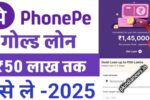$725 stimulus checks 2025
| Whatsapp Group |
| telegram Channel |
With federal stimulus programs no longer providing direct payments to Americans, several states have stepped forward to fill the gap by offering their own financial assistance programs. In July 2025, many residents across the United States will receive $725 stimulus checks from state-funded assistance programs designed to help families cope with rising inflation and increased living costs. These payments represent a significant shift toward state-level solutions for economic relief
$750 Stimulus Check
Here’s the truth: as of July 2025, there is no federally approved $750 stimulus payment. The number seems to be circulating online thanks to social media, clickbait articles, and confusion around state-level programs and older stimulus credits. While a check like this would be welcome news, no new stimulus of this exact amount has been confirmed by the IRS or Congress.
Still, there are real financial aid programs you can access—both at the federal and state levels. Some of them could get you much more than $750, especially if you missed earlier pandemic relief
Economic Impact and Future Considerations
The Family First Economic Support Program offers more than just temporary relief—it represents a strategic investment in California’s communities and long-term economic health. By delivering unconditional monthly payments of $725, the program is reshaping the conversation around poverty alleviation, economic stability, and inclusive growth.
Local Economic Stimulus
Every dollar received by low-income families is typically spent quickly and locally. Recipients often use their guaranteed income to cover:
Rent and utilities
Groceries and child care
Transportation costs
Health care and school supplies
This kind of spending directly supports local businesses, especially in underserved neighborhoods. In turn, small retailers, service providers, and community-based enterprises benefit from increased consumer demand, creating a positive ripple effect across the local economy.
Macroeconomic Benefits
Economists note that guaranteed income programs can:
Boost overall consumption
Increase household stability
Reduce reliance on emergency welfare programs
Encourage entrepreneurship and job training participation
By ensuring a minimum income floor, families are more likely to make long-term decisions—such as pursuing education, starting a small business, or moving to safer housing—that contribute to broader economic health and social mobility
$725 Stimulus checks Eligibility Criteria
To qualify for the $725 monthly payments, participants must:
Reside in a participating county
Have low or no income, generally at or below the federal poverty line
Be a parent or guardian with at least one dependent child
Not be receiving another form of unconditional income support
New York
New York has introduced a proposal for inflation relief. While still awaiting approval, the plan aims to offer:
- $300 to $500 payments
- Single filers with income up to $150,000
- Joint filers with income up to $300,000
$725 stimulus checks Payment Delivery
To ensure a smooth and efficient distribution of funds, California is using a multi-channel approach for payment delivery under the Family First Economic Support Program.
Direct Deposit – The Primary Method
Most participants are receiving their $725 monthly payments via direct deposit. If you included your bank account details on your most recent California state tax return or submitted them during the application process, your payment is automatically deposited on the 15th of each month.
This method is:
Fast – Funds typically arrive the same day.
Secure – Reduces the risk of fraud or loss.
Trackable – Payments can be confirmed through your bank or state portal.
Alternative Payment Options
For recipients without bank accounts or those who did not provide banking details, the state offers alternative delivery methods:
Prepaid Debit Cards
Issued through a state-approved financial partner. These cards are reloaded monthly and can be used for:In-store and online purchases
ATM withdrawals
Bill payments
Mailed Paper Checks
Used in select cases where digital payment methods are not feasible. Note that mailed checks:May take 5–10 business days to arrive
Require a valid mailing address
Should be reported promptly if lost or delayed
Important Note for Participants
To avoid delays or missed payments:
Keep your contact and banking information up to date
Monitor your state-issued debit card or direct deposit account each month
Use the program portal or helpline for payment status updates or to make changes




